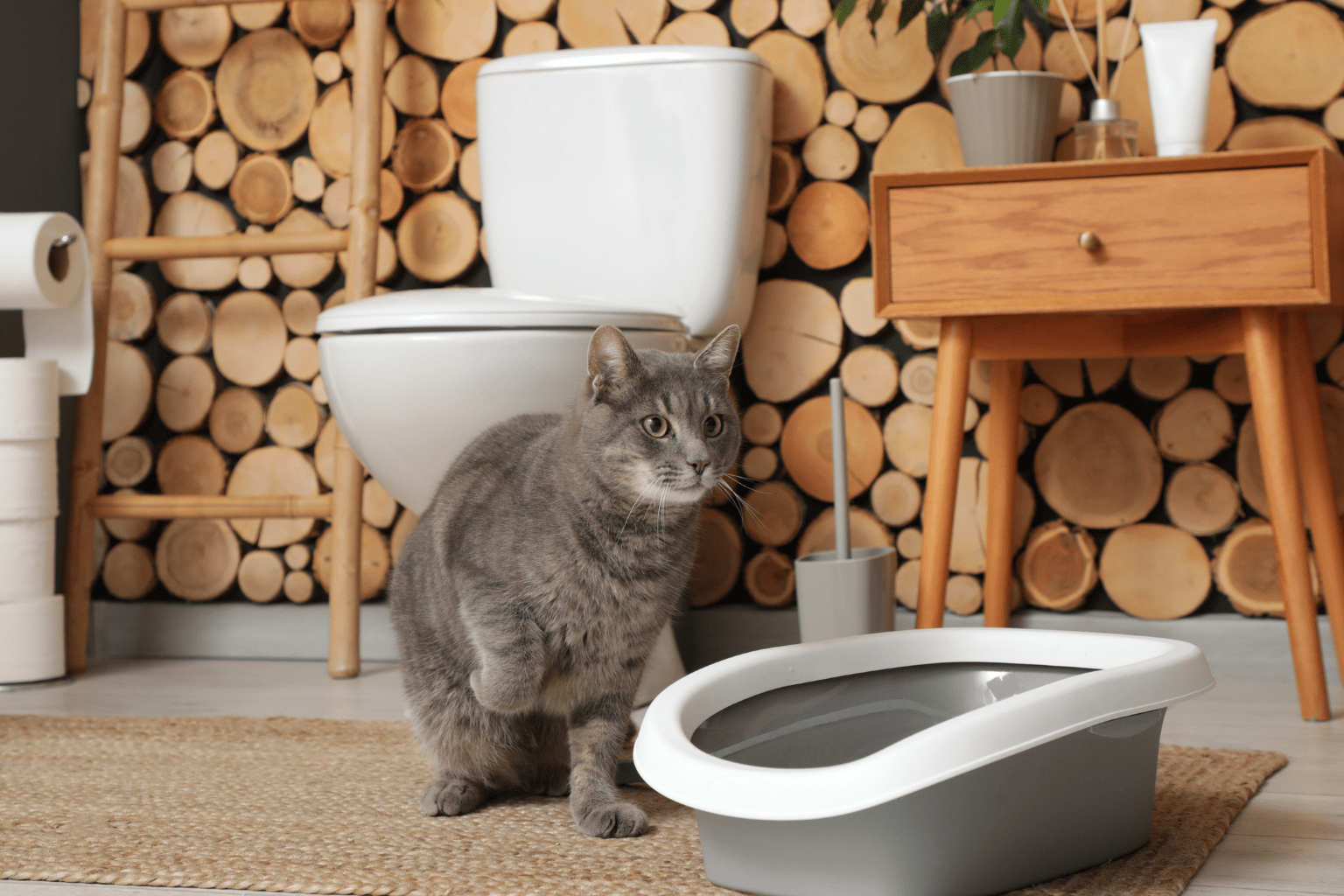Key Takeaways
- Animal control calls are essential for addressing pet safety, public welfare, and legal compliance issues.
- Animal control professionals manage situations involving aggressive animals and neglect cases.
- These services act as a critical link between animal welfare and community safety.
Table of Contents
- When to Contact Animal Control Services
- How to Make Effective Animal Control Calls
- What Happens After You Call Animal Control
- How to Find Out Who Called Animal Control on You
- Supporting Pet Wellness During Investigations
- When to Call Animal Control on a Neighbor
- What Animal Control Is Allowed to Do
- Protecting Your Pets During Investigations
- Building Positive Community Relationships
- Making Informed Decisions About Animal Control Calls
- Supporting Pet Wellness Through Challenging Situations
- Future Considerations and Evolving Standards
When to Contact Animal Control Services
Making animal control calls becomes necessary when pet safety, public welfare, or legal compliance issues arise in your community. These trained professionals handle everything from aggressive animal incidents to neglect cases, serving as the bridge between animal welfare and public safety.
Understanding when and how to engage these services protects both your pets and your neighbors while ensuring appropriate resources respond to each situation. Natural calming support can also help pets cope with stressful events that may prompt animal control involvement.
For pet owners concerned about potential health issues that could lead to complaints, natural support for digestive wellness can be a proactive way to maintain animal wellness and reduce risks.
Emergency Situations Requiring Immediate Response
Animal attacks or bite incidents top the priority list for animal control calls. Whether involving stray dogs, escaped pets, or wildlife encounters, these situations demand professional intervention to prevent further harm and ensure proper medical protocols.
Suspected animal cruelty or severe neglect cases also warrant immediate reporting. Signs include animals left without food, water, or shelter for extended periods, visible injuries without veterinary care, or pets confined in unsafe conditions.
Non-Emergency But Necessary Reports
Persistent noise complaints from barking dogs, especially during nighttime hours, fall under animal control jurisdiction. Most municipalities have specific ordinances about acceptable noise levels and duration.
Stray or loose animals roaming neighborhoods pose safety risks and require professional capture. This includes both domestic pets and wildlife that have wandered into residential areas where they don't belong.
How to Make Effective Animal Control Calls

Successful reporting requires specific information that helps officers respond appropriately. Location details, animal descriptions, and incident circumstances form the foundation of every effective report.
Essential Information to Provide
Start with the exact address or intersection where the incident occurred. Describe the animal's size, breed (if known), color, and current behavior. Include whether the animal appears injured, aggressive, or simply lost.
Document the timeline of events and any immediate dangers present. Photos or videos can provide valuable evidence, especially for neglect or cruelty cases. For more tips on responsible pet care and reporting, explore our pet blog tips for additional guidance.
Choosing the Right Contact Method
Most areas offer multiple reporting channels including dedicated hotlines, online portals, and mobile apps. For immediate threats, call 911 first, then follow up with animal control for specialized response.
Non-emergency situations work well through online reporting systems, which often provide case tracking numbers and estimated response times.
What Happens After You Call Animal Control
Response procedures vary based on call urgency, but most services follow standardized protocols for investigation and resolution. Understanding these processes helps set realistic expectations for outcomes and timelines.
Investigation and Response Procedures
Officers typically arrive within hours for emergency calls, while non-urgent matters may take 24-48 hours. They'll assess the situation, interview witnesses, and document findings through photos and written reports.
For ongoing issues like neglect, multiple visits may occur to monitor improvements and ensure compliance with local ordinances.
Potential Outcomes and Follow-up
Resolutions range from owner education and warnings to animal removal in severe cases. Officers may issue citations, require veterinary care, or mandate improved housing conditions.
Most agencies provide case updates to reporters, especially when follow-up visits or court proceedings become necessary.
How to Find Out Who Called Animal Control on You
While many reports remain confidential to protect whistleblowers, pet owners have certain rights to information about complaints filed against them. Understanding these rights helps address concerns appropriately.
Public Records and Disclosure Policies
Most animal control reports become public records after investigation completion, though caller identity often stays protected. You can request copies of reports filed about your property through Freedom of Information Act requests. For more details on legal rights and reporting, see this guide to reporting suspected animal cruelty or neglect.
Some jurisdictions require disclosure of non-anonymous complaints, while others protect all reporter identities regardless of circumstances.
Supporting Pet Wellness During Investigations

When facing animal control calls about your pets, maintaining their health and comfort becomes crucial for positive outcomes. Natural wellness support can help pets manage stress while you address compliance issues.
Our gentle, easy-to-administer pellet remedies help ease anxiety and support overall wellness without harsh chemicals. These homeopathic solutions work alongside proper veterinary care to keep pets comfortable during stressful situations. If your cat is particularly sensitive to stress, consider our Cat Anxiety & Stress Relief Bundle for comprehensive calming and immune support.
Wellness Tip: Keeping detailed health records and photos of proper pet care can help demonstrate responsible ownership during investigations.
Remember that animal control officers want to see pets thriving in loving homes. Proactive wellness care, proper housing, and responsive ownership typically resolve most concerns quickly and positively.
Not a substitute for professional veterinary advice.
When to Call Animal Control on a Neighbor
Neighbor disputes involving pets require careful consideration before making animal control calls. Document patterns of neglect, aggression, or ordinance violations rather than isolated incidents to ensure legitimate concerns receive proper attention.
Documenting Legitimate Concerns
Take photos or videos showing unsafe living conditions, injured animals, or aggressive behavior toward people or other pets. Record dates, times, and specific incidents to establish patterns rather than one-time occurrences.
Noise complaints require documentation of duration and frequency. Most ordinances specify acceptable decibel levels and quiet hours, making objective evidence crucial for enforcement action. If you're unsure about your cat's behavior or health, you may want to read does my cat have worms for more insight.
Attempting Direct Communication First
Approach neighbors diplomatically about minor issues before involving authorities. Many pet problems stem from owner awareness gaps rather than intentional neglect, making conversation often more effective than enforcement.
Reserve animal control calls for situations involving genuine safety risks, repeated ordinance violations, or neighbors who remain unresponsive to direct communication attempts.
What Animal Control Is Allowed to Do
Animal control officers operate under specific legal authorities that vary by jurisdiction, but generally include investigation powers, citation issuance, and animal removal in extreme cases. Understanding these boundaries helps set realistic expectations for intervention outcomes.
Investigation and Enforcement Powers
Officers can enter properties with warrants or owner consent to investigate reported violations. They document conditions through photographs, interview witnesses, and issue citations for ordinance violations like inadequate shelter or veterinary care.
Immediate animal removal occurs only when imminent danger exists or court orders mandate seizure. Most cases involve compliance timelines allowing owners to address deficiencies before escalation.
Legal Limitations and Due Process
Constitutional protections prevent officers from entering private property without permission or warrants except during emergency situations. Pet owners retain rights to contest citations and appeal removal decisions through administrative or court proceedings. For a deeper look at legal codes, review the NYC Health Code Article 161.
Officers cannot make veterinary diagnoses or mandate specific treatments, though they can require professional veterinary evaluation for animals showing signs of illness or injury.
Protecting Your Pets During Investigations

When facing animal control calls about your pets, proactive wellness management demonstrates responsible ownership while supporting your animals through potentially stressful situations.
Wellness Strategy: Maintain detailed health records, current vaccinations, and photo documentation of proper housing conditions to demonstrate ongoing responsible care.
Natural Stress Support for Pets
Investigation visits can create anxiety for sensitive pets. Our gentle homeopathic remedies help support emotional balance and overall wellness without interfering with any required veterinary treatments or medications. For dogs, the Dog Anxiety & Stress Relief Bundle is designed to address separation anxiety and noise phobia.
These pellet formulations work naturally with your pet's system to promote calm behavior and healthy responses to environmental stressors, making interactions with officials more positive for everyone involved.
Demonstrating Responsible Ownership
Keep veterinary records easily accessible and housing areas clean and well-maintained. Ensure pets have adequate food, water, shelter, and exercise opportunities that meet or exceed local ordinance requirements.
Responsive communication with officers and willingness to address any legitimate concerns typically resolves most investigations quickly while maintaining positive relationships with animal control services.
Building Positive Community Relationships
Proactive community engagement prevents many situations that lead to animal control calls while fostering supportive relationships with neighbors and local animal services.
| Approach | Community Impact | Prevention Value |
|---|---|---|
| Open Communication | Builds neighborhood trust | Resolves issues before escalation |
| Visible Pet Care | Demonstrates responsibility | Reduces complaint likelihood |
| Local Ordinance Knowledge | Shows civic engagement | Ensures compliance proactively |
| Emergency Preparedness | Protects community safety | Prevents crisis situations |
Proactive Wellness and Compliance
Regular veterinary care, proper nutrition, and natural wellness support create visibly healthy, well-behaved pets that reflect positively on your commitment to responsible ownership. If you want to support your pet's overall health, explore our natural support for life-long wellness in dogs & cats.
Understanding local pet ordinances regarding licensing, vaccination requirements, leash laws, and noise restrictions helps maintain compliance while building positive relationships with both neighbors and animal control services.
Not a substitute for professional veterinary advice.
Making Informed Decisions About Animal Control Calls
Successful resolution of animal-related concerns depends on understanding when animal control calls serve the community effectively versus when alternative approaches yield better outcomes for all parties involved.
Decision Framework: Consider severity, documentation quality, previous communication attempts, and potential consequences before initiating official reports.
Weighing Intervention Necessity
Emergency situations involving immediate danger require swift action through proper channels. Non-emergency concerns benefit from thoughtful assessment of whether official intervention will improve conditions or create additional stress for animals and owners.
Effective animal control utilization focuses on genuine welfare concerns rather than minor inconveniences or neighbor disputes that could be resolved through direct communication.
Long-Term Community Outcomes
Constructive reporting practices strengthen animal control effectiveness by ensuring resources focus on legitimate concerns. This approach builds community trust while maintaining essential protective services for animals genuinely requiring intervention.
Pet owners who understand these systems can better advocate for their animals while contributing to neighborhood harmony through responsible ownership practices. For more on how cats respond to stress and their natural instincts, read cats prey animals.
Supporting Pet Wellness Through Challenging Situations

Whether facing investigation visits or helping animals through stressful transitions, natural wellness support provides gentle assistance without complicating veterinary treatments or official requirements.
Comprehensive Natural Support Options
Our carefully formulated homeopathic remedies address multiple wellness concerns through single, easy-to-administer pellet formulations. These natural approaches support your pet's inherent healing abilities while maintaining compatibility with any required medical treatments. You can also explore our dog and cat supplement bundles for comprehensive wellness support.
From anxiety management during official visits to digestive support during environmental changes, these gentle remedies help maintain your pet's comfort and well-being throughout challenging circumstances.
Building Resilient Pet Health Foundations
Consistent natural wellness support creates stronger, more adaptable pets better equipped to handle unexpected situations. This proactive approach demonstrates responsible ownership while supporting your animal's long-term health and happiness.
Regular wellness maintenance through natural methods often prevents many issues that could potentially lead to animal control calls, creating positive outcomes for pets, owners, and communities.
Future Considerations and Evolving Standards
Animal control practices continue evolving toward more collaborative, education-focused approaches that prioritize both animal welfare and owner support over purely punitive measures.
Emerging Community-Based Solutions
Progressive communities increasingly emphasize prevention through education, accessible veterinary care, and support services for pet owners facing economic challenges. These approaches reduce the need for enforcement actions while improving overall animal welfare outcomes.
Technology integration through mobile apps, online reporting systems, and digital resource sharing streamlines communication between pet owners, neighbors, and animal services while maintaining appropriate documentation standards.
Holistic Wellness Integration
Growing recognition of natural health approaches creates opportunities for pet owners to demonstrate comprehensive care through both conventional veterinary services and complementary wellness support methods.
This integrated approach often impresses investigating officers and neighbors alike, showcasing commitment to animal welfare through multiple care modalities that address physical, emotional, and behavioral wellness needs.
Understanding animal control calls as part of a broader community animal welfare system empowers responsible pet owners to engage constructively while protecting their animals' best interests through every interaction.
Not a substitute for professional veterinary advice.
Frequently Asked Questions
What types of situations should prompt me to contact animal control services?
Contact animal control when you encounter aggressive animals, suspected neglect or cruelty, stray pets, or safety hazards like animal attacks. They also handle noise complaints and situations where pets or wildlife pose risks to the community.
What information is most important to provide when making an animal control call?
Provide clear details including the exact location, description of the animal(s), nature of the concern, and any immediate safety risks. The more precise your information, the better animal control can respond effectively.
How can I support my pet's wellness during and after an animal control investigation?
Offering natural calming support can help your pet manage stress during investigations. Maintaining overall wellness with gentle, homeopathic remedies supports your pet’s resilience and comfort throughout challenging situations.
What actions are animal control officers authorized to take when responding to a complaint?
Animal control officers can assess the situation, capture stray or aggressive animals, investigate neglect or cruelty claims, and enforce local ordinances. Their goal is to protect both animals and the community while ensuring pets receive proper care.



